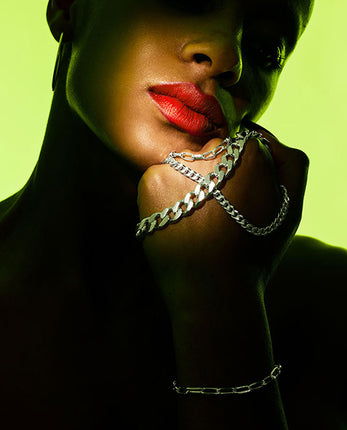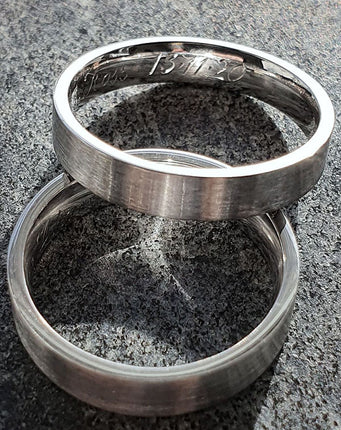Jewellery Buying Guide

Jewellery is special. It's the last thing that we put on to feel ready for work or an exciting night out. It is also a vast industry with excellent fakes, enhanced, and lab grown gemstones on the market alongside their natural counterparts.
The word gold is used everywhere in fashion and fine jewellery and it is available in different colours and qualities. It's hard to know what to value and what to watch out for, so I wrote an article for Maven 46 to help narrow it down.
A few key tips on what to look for and what to ask. You can't be expected to know it all, but they person you are buying from should be very well informed and if they don't seem to be - walk!
Having grown up in the jewellery trade I am aware of the vast variety of valuable stones on the market and the even larger amount of stones with limited, little or no value.
My mother Jane Huston is a GIA certified Gemologist so I am very lucky to have access to her years of expertise and to the many nuggets of wisdom she has passed on.
That's why I wrote a buying guide for Maven 46 when asked. It's a great place to start if you have any friends thinking of proposing, recently engaged or wanting to invest in quality jewellery. Happy shopping!
Here is a link to the full article on Maven 46 (or see below)
xo
Jenny
Article:
‘The’ Most Important Things to Know When Buying Jewellery
Our grandparents knew about good jewellery. They often had relationships with their jeweller of choice, going back each year for birthdays, anniversaries and Christmas presents. Even today, a jeweller’s reputation is everything, it is a relationship based on trust, knowledge, expertise and increasingly, on transparency (as well as Gemstone certifications where appropriate).
Jewellery and watches have always been a sign of status and wealth and like a good coat, suit or pair of shoes, it is worth investing in the best quality that you can afford. Sadly for us, the line between fine jewellery and costume jewellery or fashion jewellery, is starting to blur.
With fashion jewellery often selling at very high price tags it can be difficult to know if you are paying for quality and skill or simply paying for a brand name. The industry uses words like Lucite, which sounds much more exciting than its actual dictionary definition: “Lucite: a type of transparent plastic.”
Marketing and advertising has become so huge in the industry that I fear many consumers are being misled by lower end jewellery companies into believing that they are buying something much more valuable than it actually is. I hear the words “it’s real” spoken far too often. Real what?!
What is the metal? What quality is the stone? Has it been heat-treated or dyed to look that colour or is it a natural beauty? What carat is the gold? These are the question we should be asking.
Here are 5 things to consider before you buy jewellery this christmas.
1. Know the key facts about gold
Gold is naturally yellow.
Gold is measured in 24ths, so 24 carat is 100% gold. The addition of other metals (alloys) to gold are used to increase the toughness and hardness of the metal, to change the colour i.e. white gold, red or rose gold and in the case of lower carat gold, to lessen the cost. The higher the carat the more valuable the gold.
Jenny’s Tip: Think cost per wear. Unlike a sparkly jumper that comes out once per year, if it is a piece of jewellery you will wear with pride every day, or every week, then it’s worth it!

2. Look for a hallmark
A hallmark is a guarantee of metal purity. In the UK and in Ireland there are three compulsory hallmarks applied to precious metals as a quality control: a sponsor’s (maker’s) mark, a fineness mark (purity), and an assay office mark. These marks establish the origin and fineness of the precious metal and ensure it has been accurately and independently tested (assayed). In Hallmarking, the metal and fineness mark for 18 carat is 750. The mark for 14 carat gold is 585. The mark for 9 carat is 375.
Irish hallmark examples:
18 carat gold is 18 parts pure gold and 6 parts alloy or 75% pure gold. Also stamped as 750.
14 carat gold is 14 parts pure gold and 10 parts alloy or 58.5% pure gold. Also stamped as 585.
9 carat gold is 9 parts pure gold and 15 parts alloy or 37.5% pure gold. Also stamped as 375.
Jenny’s Tip: 18 carat gold is ideal for allergy sufferers, as it does not cause allergic skin reactions. No one is allergic to gold, but they may be allergic to the alloys it’s mixed with.
3. Beware of vague or misleading labels
Magazines and fashion retailers will often list something as “gold” when they should say “gold coloured”, “gold tone” or “gold plated” (or they should say the carat if it is in fact gold).
18 carat gold-plated is not 18 carat gold! What is underneath? Will it make your skin turn green when the plating wears off? Is it a quality vermeil – sterling silver (hallmarked 925) plated in carat gold or is it a cheap base metal? If you find a piece of jewellery that is only €20 more in “gold” than it is in “silver”, then it isn’t gold!
Jenny’s Tip: Gold vermeil (pronounced vur-may) is a wonderful way to have great jewellery at a reasonable price, especially for large statement pieces, but if you want to enjoy your gold jewellery for years, without fear of fading, invest in the real thing. Nothing replaces the look or feel of solid carat gold. Plating, no matter how good, will eventually wear off (especially on items like rings and bracelets that receive more wear).
Terms used in fashion jewellery:
Gold filled, rolled gold, bonded gold and gold plate are often used in fashion jewellery. To read more about what they are and how they are produced scroll to the bottom of Edge Only’s FAQ page here.
4. Coloured stones
There have been a flood of “designer” stones hitting the market in the last decade that are new names for heat and colour treated (dyed) stones that are not inherently valuable. Typically from the quartz family, they can be very large, but as they are very common, not of any particular value. Enjoy them for what they are – a fun stone typically set in silver or vermeil.

Traditionally precious gemstones refer to Sapphires, Rubies, Emeralds and Diamonds but, there are many more very valuable gemstones out there (tanzanite, aquamarine…).
Value is typically in depth of natural colour as well as the clarity and cut, but each stone family has a different set of criteria. For example an Emerald’s value (shown above) is less about clarity (they have natural inclusions) as they are about colour and other attributes.
For each family of gemstone there are stones of incredible beauty with exceptional value but also stones that may be pretty to look at, but are of little value.
 There is so much information to learn in regard to coloured stones and what makes them valuable, that I would recommend only buying from a reputable jeweller or goldsmith, preferably with gemmological qualifications from the GIA (Gemmological Association of America) or BGI (British Gemmological Association) or that has advanced trade knowledge.
There is so much information to learn in regard to coloured stones and what makes them valuable, that I would recommend only buying from a reputable jeweller or goldsmith, preferably with gemmological qualifications from the GIA (Gemmological Association of America) or BGI (British Gemmological Association) or that has advanced trade knowledge.
Not all retailers are gemmologists but they make sure they purchase from qualified and experienced gemstone suppliers. Your retailer or jeweller should be able to explain a great deal about stones.
Jenny’s Tip: If the sales person can’t talk you through and show you a poor vs. an excellent stone, I would be wary. Unlike with Diamonds, it is often very apparent which coloured stone is better and why.
5. Diamonds – the 4cs
The globally accepted standard for describing diamonds are the 4Cs: Colour, Clarity, Cut, and Carat Weight.
Diamond Colour: In most diamonds, the term actually refers to the absence of colour. The less colour in the stone, the more desirable and valuable it is. Colourless are the most valuable because they are the most rare.
Jenny’s tip: The exception to this are very rare and exceptionally valuable – saturated pinks, blues and greens. Also deep canary yellow diamonds.
Diamond clarity measures the amount, size and placement of internal ‘inclusions,’ and external ‘blemishes.’ Grades run from ‘Flawless,’ with virtually no imperfections, to ‘Included,’ which contain a significant number of imperfections.
Jenny’s tip: Avoid stones with “Visible to the eye” inclusions (they often look like black pepper or foggy patches)! Aim for VVS, VS, or the best that you can afford, especially in centre stones (it’s of less concern in small accent stones). A quality jeweller will not usually sell diamonds with visible inclusions or stones below SI1 unless it has some redeeming factors.

Diamond cut does not refer to a diamond’s shape, but to the proportion and arrangement of its facets and the quality of workmanship. The amount of brilliance, sparkle and fire in a diamond is determined by cut. Grades range from ‘Excellent’ to ‘Poor.’
Jenny’s tip: Don’t confuse shape with cut.
Diamond carat refers to a diamond’s weight. Generally speaking, the higher the carat weight, the more expensive the stone. Two diamonds of equal carat weight, however, can have very different quality and price when the other three “C”s are considered. No matter how beautiful a diamond may look you simply cannot see its true quality. The 4Cs will provide you with the information you need to know the diamond’s actual quality.
Jenny’s tip: Bigger is not always better! There is little value in a large stone that has poor colour, poor clarity and is badly cut.
Black Diamonds: Until recently black (or grey) Diamonds or “industrial diamonds” were not used in jewellery – they were used for drilling and grinding – and still are. The opaque colour of black diamonds is caused by dark inclusions or, more commonly, by colour treatment.
Jenny’s Tip: Black Diamonds have become fashionable and as a black loving, rock and roll kind of gal, I really like them to accent jewellery, but they are not very valuable (in comparison to a clear, colourless diamond). Treat them as a low grade diamond when considering price and don’t be swayed by carat weight.
Shop fine gold jewellery



